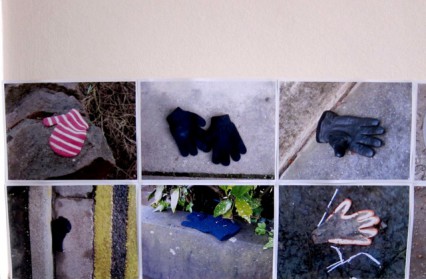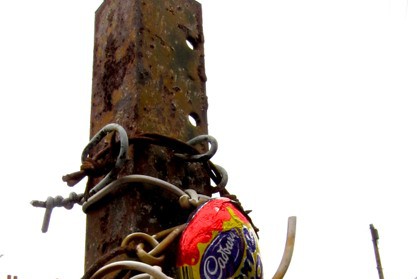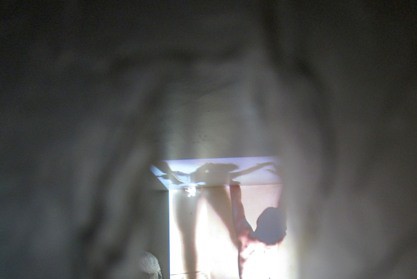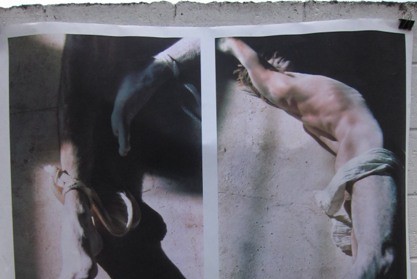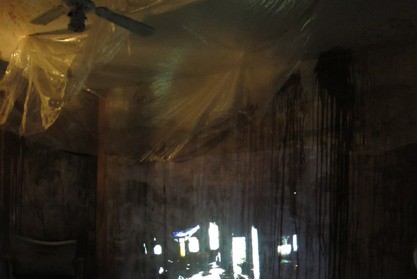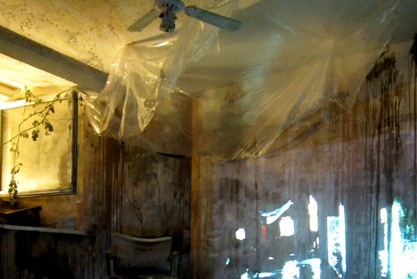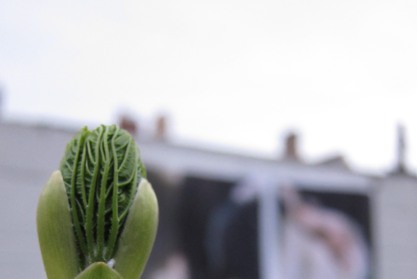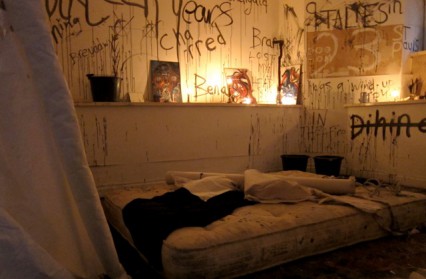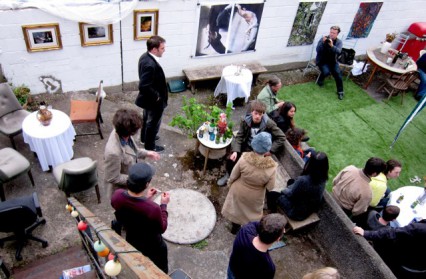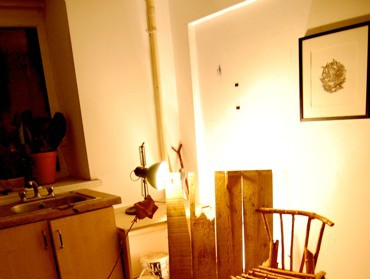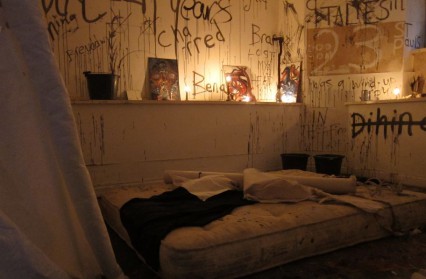This week, I had the pleasure of viewing tactileBOSCH’s new pop-up exhibition, Cement Garden – a show set between the disused basement and garden of a block of flats in Riverside, Cardiff. Comprising of sculpture, performance, photography and video work, the show is running for another week.
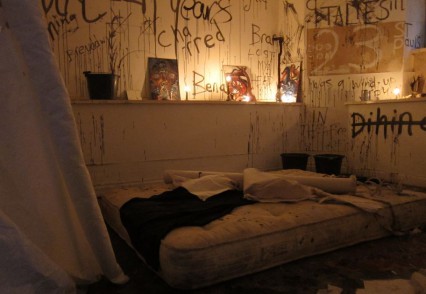
Various Artists
tactileBOSCH, Cardiff
Out on the terrace we can see Kim Fielding’s photographical diptych ‘The Call of Death’. Appearing like a Yin and Yang to the viewer, each image leads into the next, showing a masterly use of light and colour. Geraint Evans’s fauvist-
It is hard to criticise the use of space here, but I do wonder how the photography on the outside portion will survive the Spring weather. It is a shame, as there would be no way of affecting the curatorial decisions in the basement part of the show such is its impact on entering. But this is not to detract from what will remain in the basement if the outside has been returned to normal – such is the life of a pop-
The basement element of this group show is devoid of any natural light and (please pardon the obvious cliché here, it is the only term worth using) is like entering another world on descending the narrow Victorian cellar stairs.
Iwan ap Huw’s stream-
On entering Helene Roberts’s room made in conjunction with Tiff Oben, you can’t help but feel trapped; most of the room is filled with a shallow pool of water, stopping any real movement around the room and enabling the enclosed space and damp walls to let out a claustrophobic atmosphere. Across at the far wall is a slideshow of pictures of a disused warehouse, showing a much larger yet similar space in a state of disrepair. As this is a reference to the outside world, it leaves a feeling of hopelessness. Added to this is the most remarkable piece of sculpture, incorporating a window which leads to a storm drain. Roberts has filled the window and this part of the room with bracken and dead twigs and leaves; lit from the bottom, it catches the eye immediately and keeps its attention. However, as the water pool is in the way in the middle of the room, the viewer has to lean over to see this feature properly, further adding to the sense of oppression and subjection.
In Kim Fielding’s video piece ‘It’s Behind You’, a naked, blindfolded man reaches up, trying to grab his own shadow. The projector is placed so that the upper half of the video is on the ceiling rather than the opposite wall. The feeling is that he cannot grab it, furthering the visual metaphor that is implemented in the figure trying to catch his own shadow, like a moving version of one of Francis Bacon’s seminal nudes.
As far as pop-
All photographs: C. More Biscuit


